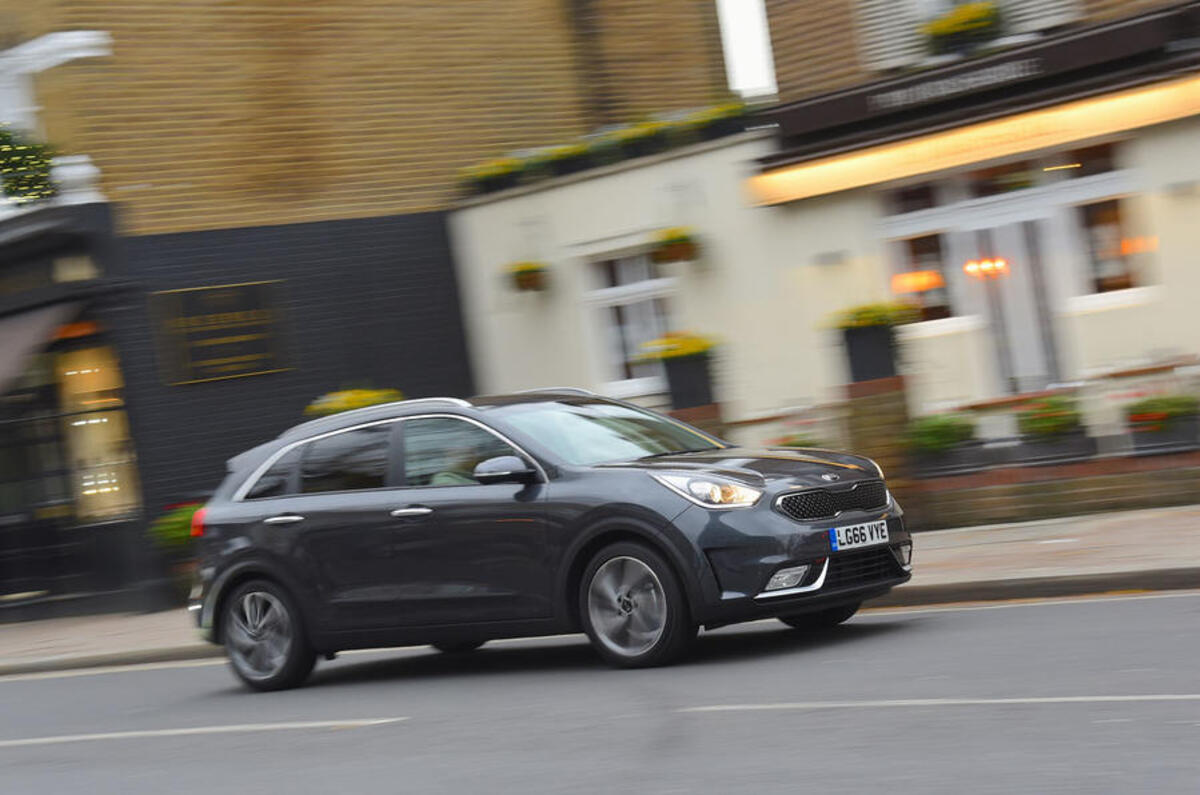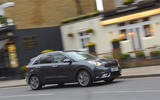On paper, the Kia Niro is a tempting proposition.
Here’s a crossover with space for the family and their luggage, but with the attractive running costs of a hybrid and low tax bills to match. It even squares up well on looks and Kia’s seven-year warranty further sweetens the deal.
But on-paper appeal is different from real life, and over eight months and more than 6800 miles, we’ve found Kia’s first dedicated hybrid to be something of a mixed bag. And, as Frank Sinatra once sang, I’ve learned some things that only time can teach.
Where the Kia really found its footing was during my weekday commute, seven gnarly miles along a mix of tight urban streets and dual carriageways, with the top speed of 50mph on a clear run. Here, the Niro could use its electric power in stop-start traffic, minimising the fuel consumption. Or that’s the theory: in the real world, disappointingly, my average hovered around 45-46mpg.
Even when we drove as carefully as we could, we were unable to get close to Kia’s claimed fuel economy figure of 64.2mpg (combined). In fact, the best we saw was 51.9mpg.

We travelled far and wide in the Niro, too, from my home county of Northamptonshire to the Lake District and into mainland Europe. That gave us plenty of time to assess how it performed on motorways. There was sufficient performance from the 1.6-litre petrol engine to get you up to speed, but the car was far from quiet in terms of wind and road noise. When I used the cruise control, the Niro oscillated either side of the pre-set speed rather than holding a constant velocity.
There were things we liked, though. Executive editor Matt Burt was impressed by how the Niro handled country lanes, where at slower speeds the hybrid system could merrily flit between its petrol and electric power sources.



















Join the debate
Add your comment
"and stick to electric power at lower speeds."
Not sure what this means - usually hybrid driving is most economical when you let the computer do the thinking - "using electric power" deliberately means that the ICE will eventually have to fire up to replenish the battery - most owner manuals warn against it on economy grounds. Taking economy figures from the trip computer is meaningless - they are +/- 10% accurate at best - most are affected by the state of the fuel tank, and tend to be more accurate with a full tank as the readings tend to be non-linear. Also you don't mention the weather - travelling at night means lower temperatures, which is not good for hybrid driving - the hotter the better for battery efficiency. Also not mentioned is the version of the Niro being used and the wheel/tyre size - the larger wheels can have a 5-10% economy penalty
Once again, real world economy 30% less...
...than official figures. I've yet to see a modern - downsized turbo, petrol or diseasel, hybrid - that doesn't by and large conform to this approximation.
Not very impressive
Another magazine with Auto in its title is running a V40 D2 with a 2.0 litre diesel and had recently had a genuine mpg of over 70..